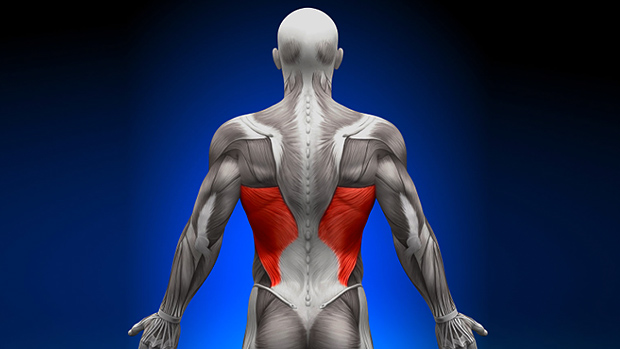Here's what you need to know...
- With a smart training plan, you can cut your gym time in half and increase your gains at the same time.
- Intense workouts done for three days a week with greater discipline, focus, and compliance will yield much better results than long-duration workouts.
- This workout includes high-frequency muscle stimulation, explosive rep speed, disciplined rest periods, progressive overload, big movements, and ramp loading.
Forget 90-Minute Workouts
The average lifter's training program is fat and bloated, meaning it's full of "fluffy" exercises that don't lead to improvements, ridiculously long rest periods, and inefficient warm-ups.
In short, a lot of time is spent in the gym, yet gains are slow to nonexistent. The good news is, you can cut your gym time dramatically - maybe even down to 30 minutes - and start making progress again.
The 6 Keys to Efficient Training
Gaining muscle isn't complicated. It requires focused and consistent execution of the basics over time.
There are better methods than crushing your body with crazy, long-duration workouts. Short, intense workouts will yield much better results, if you do them right.
Check out the six elements of a more efficient workout below, then I'll give you a sample program that puts it all together.
1 – High Frequency Muscle Stimulation
A 2010 study analyzed training frequency and the anabolic response. They found that repeated bouts of resistance exercise and protein ingestion trigger an anabolic response and growth.
In other words, training muscles with a higher frequency makes muscles grow and adapt to the new stress.
Basically, hitting the biggest muscles in your body 2-3 times per week will increase protein synthesis and build muscle.
2 – Explosive Rep Speed
Lift each rep explosively to maximize force and good form. This is done in two ways:
- Lift heavier weights
- Lift lighter weights faster (or move your bodyweight faster)
Since most lifters can't go heavy every single workout, hammer explosive intent on every rep. This way, you'll force your body to generate maximum tension during each rep.
By moving weights as fast and as hard as possible, you'll recruit more muscle fibers and maximize nervous system recruitment for greater performance without crushing your joints.
3 – Disciplined Rest Periods
First, let's redefine rest. Stop swiping away on Tinder between sets and get mentally locked in to destroy your workout.
Instead of conventional rest, we'll just dial back in-between sets of heavy/explosive exercises with mobility and stability work, and also include agonist/antagonist supersets with moderate rep work.
This way, you'll boost performance without increasing the risk of injury and maximize efficiency.
4 – Progressive Overload
Training with high focus and progressively adding weight to the bar will create the anabolic response necessary for growth. I've provided general guidelines for loading in the plan below, but you'll need to add weight to the bar over time (and record it).
5 – Big Movements
Dominating the big, multi-joint movement patterns is the meat and potatoes of training.
You know what works for you, so use squat, deadlift, press, and pull variations that best suit your training goals. Switching between squats and front squats or switching between trap bar deadlifts and conventional pulls is fine, but stay consistent for at least 4 weeks.
6 – Ramp Loading
Through gradually increasing resistance and managing fatigue, ramp loading supercharges your strength. With shorter workouts, you're able to train with a sufficient volume and shorter rest periods before doing a heavier top-end set to boost strength.
As an added bonus, doing each rep explosively, as detailed earlier, boosts nervous system recruitment for greater gains in strength and power.

Maximal Mass, Minimal Time Workouts
These are total body workouts to maximize training efficiency. They include the big lifts early in the training session, as well as a "time permitting" session should you find yourself with more time than originally planned.
Use whichever three-day split works for you. Just make sure you allow at least 36 to 48 hours of rest between workouts.
Day One
| Exercise | Sets | Reps | Rest | |
|---|---|---|---|---|
| A1 | Dumbbell Jump Squat * | 2 | 5 | 45 sec. |
| A2 | Incline Plyo Push-Up (video below) | 2 | 5 | 45 sec. |
| B1 | Power Clean or High Pull | 3 | 3 | |
| B2 | Plank | 3 | 30 sec. | 60-90 sec. |
| C1 | Bench Press * * | 3 | 5 | 60 sec. |
| C2 | Lunge | 3 | 5 / leg | 60 sec. |
| Time Permitting | ||||
| D1 | Farmer Walk | 3 | 30 sec. | |
| D2 | Timed-Rep Dips | 3 | 30 sec. | 30-60 sec. |
* Dumbbell Jump Squat — Simply squatting down and exploding up while holding a pair of dumbbells.
* * Bench Press — 65%, 75%, 85% 1RM.
Day Two
| Exercise | Sets | Reps | Rest | |
|---|---|---|---|---|
| A1 | Push Press or Military Press * | 1/3 | 8/5 | |
| A2 | Groiner (video below) | 3 | 5 / side | 60-90 sec. |
| B | Deadlift * | 1/3 | 8/5 | 120 sec. |
| C | Chin-Up | 3 | 8 | 60 sec. |
| Time Permitting | ||||
| D1 | Side Plank * * | 3 | 30 sec. | |
| D2 | Timed-Rep Biceps Curls | 3 | 30 sec. | 30-60 sec. |
* Push Press or Military Press and Deadlift — 65%, 75%, 85% 1RM.
* * Side Plank — Per side.
Day Three
| Exercise | Sets | Reps | Rest | |
|---|---|---|---|---|
| A1 | Back Squat/Front Squat * | 1/3 | 8/5 | |
| A2 | Kneeling Thoracic Mobility (video below) | 3 | 6 | 60-90 sec. |
| B1 | Dumbbell Row | 4 | 6 | |
| B2 | Dumbbell Bench Press | 3 | 8 | 90 sec. |
| Time Permitting | ||||
| C1 | Kettlebell Crosswalk (video below) | 3 | 30 sec. | |
| C2 | Single-Leg Hip Thrust | 3 | 6 / leg | 30-60 sec. |
* Back Squat/Front Squat — 65%, 75%, 85% 1RM.
Optional Bonus Day
Because low intra-workout volume may hinder hypertrophy related to metabolic stress, you might want to schedule an extra training day to hit the "mirror" muscles with higher rep work.
This is schedule dependent and should take place later in the week after the 3 workouts have been completed.
Time Permitting Exercises
As long as you complete the top three exercises of the day, you'll see results. Time permitting, you'll still have the option to do more work.
Most lifters that start paying attention to their rest periods are able to squeeze in much more work than they thought possible. Paying greater attention to rest periods that match your goals is a vastly underrated source of overload.

But What About Cardio?
If your goal is to gain muscle, your focus shouldn't be on cardio. Too much cardio will negate your gains in the gym and hinder recovery. That said, no one wants to stay soft as the Michelin man.
If you can make some time, choose one of these:
- Low intensity cardio only, such as incline walking for 20-30 minutes, 2 times per week.
- High intensity methods like sprints, complexes, or sled work 10-15 minutes a day, 2 times per week after training.
Don't overdo it. Remember: maximal muscle, minimal time.
Reference
- Phillips et al, The Anabolic Processes in Human Skeletal Muscle





